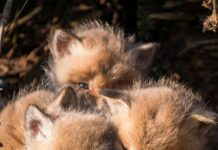As part of the very first Wales Fungus Day – which is being held at the National Botanic Garden on Sunday October 14th – there is a nationwide search for Wales’ largest fairy ring.
Organiser Bruce Langridge is calling on keen-eyed dog walkers, ramblers, gardeners and park rangers to let him know about fairy rings they come across.
Says Bruce: “You might see one in your local park, meadow, wood or even your own garden. Just let me know how wide you think it is – photographing or having a stab at identifying the mushroom would be a nice bonus. We want to keep a rolling record of all finds in the run-up to Wales Fungus Day and, hopefully, be able to announce the country’s biggest known fairy ring.”
On Wales Fungus Day itself, there will be:
• a fungi recording blitz around the Garden and its adjoining Waun Las National Nature Reserve
• a fungus foray to an internationally important waxcap-rich meadow on the Garden’s Waun Las National Nature Reserve
• Fairy Ring Frolics – a walk to the Garden’s fungal hotspots uncovering Welsh mythological and the scientific secrets of fairy rings
• family activities linked to From Another Kingdom, the UK’s first major exhibition on fungi which is on tour from Royal Botanic Gardens Edinburgh, plus model-making, drawing, microscopes, spore printing, a quiz
• fungi book displays and
• cooking with fungi.
Renowned fungi expert, Professor Lynne Boddy will give the inaugural Wales Fungus Day Lecture.
For more information or to report your fungi findings, contact Bruce Langridge on bruce.langridge@gardenofwales.org.uk<mailto:bruce.langridge@gardenofwales.org.uk> or phone Bruce on 01558 667162.
Entry into the Garden on 14th October 2012 will be free to British Mycological Society members who have proof of membership.
So what is a fairy ring?
Put most simply: it is a visible circle or arc of fruiting mushrooms. There are around 60 species that are known to do this and some rings could be hundreds of years old. Rings form for different reasons.
Typically, this is the result of a fungal spore being blown into a field where it germinates. Its body of fine filaments, known as the mycelium, spreads out from the centre in a circular pattern, and fruit bodies appear above the ground near the edge of this spread. Over the years, this circle gets bigger and bigger.
Other rings appear in woods or around trees and shrubs. Here, the mushrooms are feeding off the roots of trees, and their mycelium spread outwards, forming a ring around the tree or shrub.
Help keep news FREE for our readers
Supporting your local community newspaper/online news outlet is crucial now more than ever. If you believe in independent journalism, then consider making a valuable contribution by making a one-time or monthly donation. We operate in rural areas where providing unbiased news can be challenging. Read More About Supporting The West Wales Chronicle





















